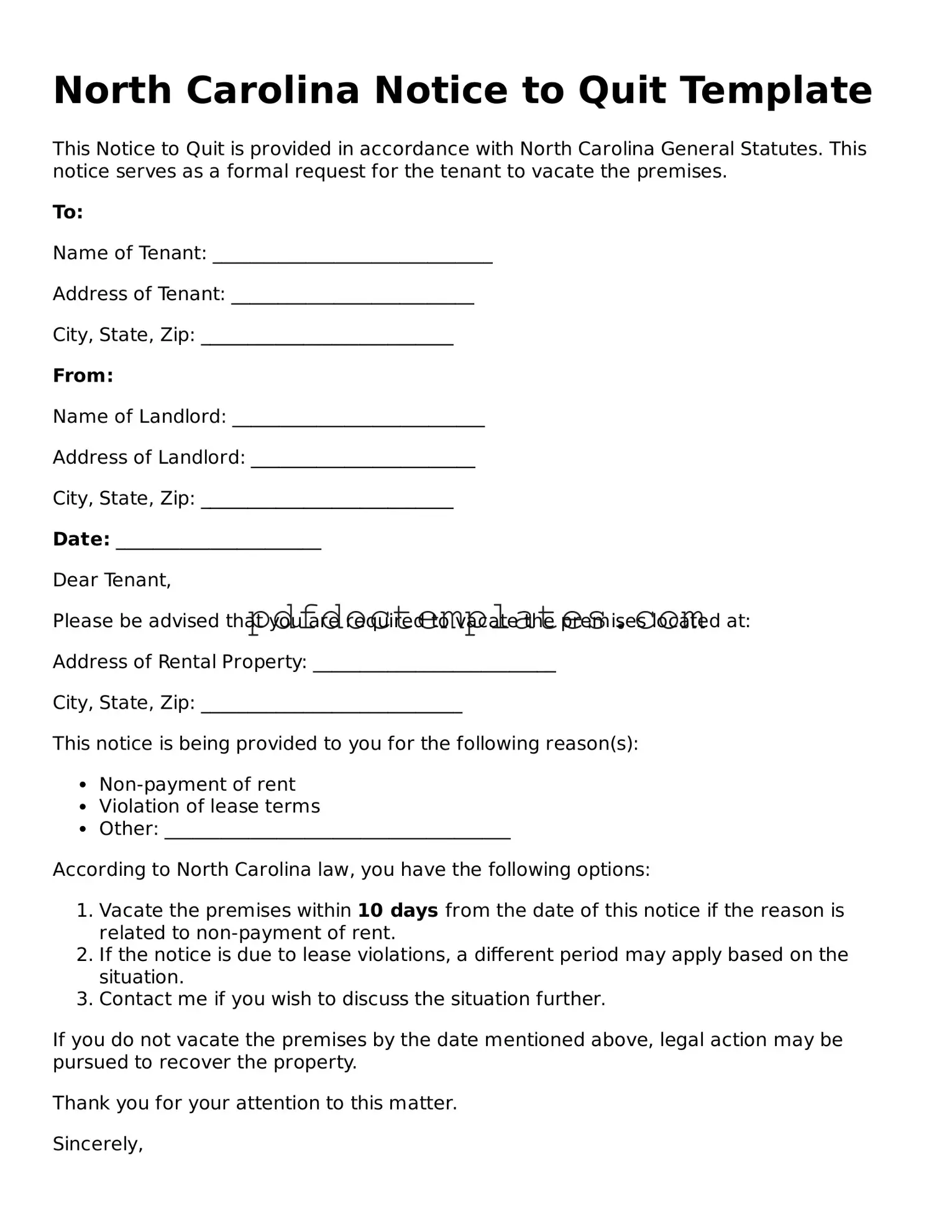North Carolina Notice to Quit Template
This Notice to Quit is provided in accordance with North Carolina General Statutes. This notice serves as a formal request for the tenant to vacate the premises.
To:
Name of Tenant: ______________________________
Address of Tenant: __________________________
City, State, Zip: ___________________________
From:
Name of Landlord: ___________________________
Address of Landlord: ________________________
City, State, Zip: ___________________________
Date: ______________________
Dear Tenant,
Please be advised that you are required to vacate the premises located at:
Address of Rental Property: __________________________
City, State, Zip: ____________________________
This notice is being provided to you for the following reason(s):
- Non-payment of rent
- Violation of lease terms
- Other: _____________________________________
According to North Carolina law, you have the following options:
- Vacate the premises within 10 days from the date of this notice if the reason is related to non-payment of rent.
- If the notice is due to lease violations, a different period may apply based on the situation.
- Contact me if you wish to discuss the situation further.
If you do not vacate the premises by the date mentioned above, legal action may be pursued to recover the property.
Thank you for your attention to this matter.
Sincerely,
_____________________________
Signature of Landlord
